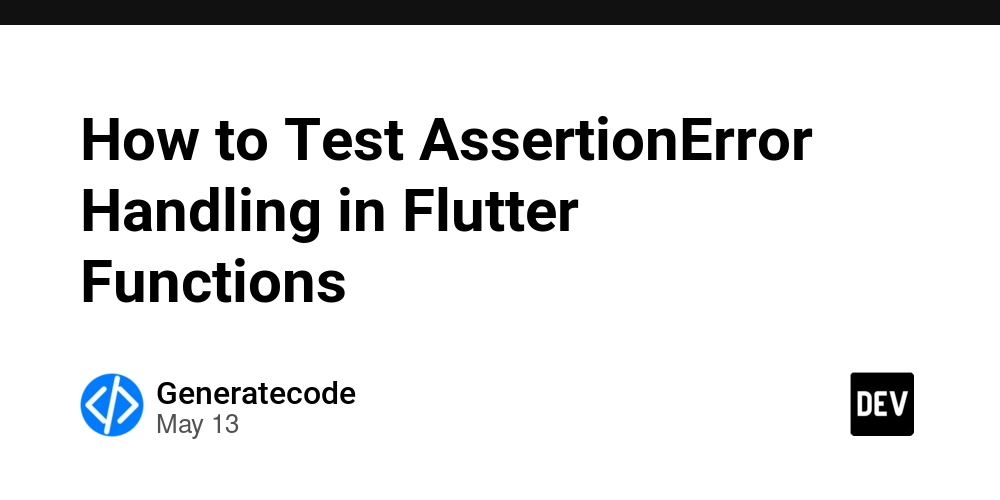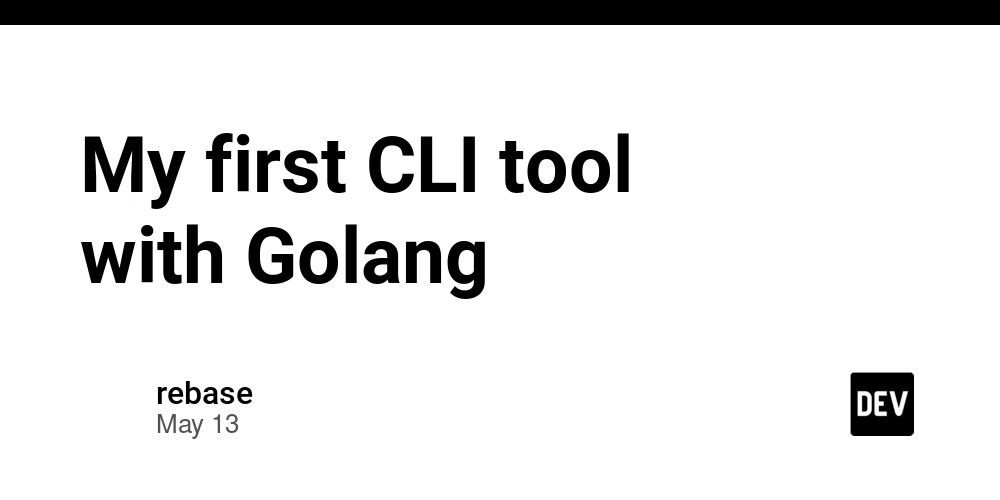How to Test AssertionError Handling in Flutter Functions
Introduction In Flutter development, it's crucial to ensure that functions handle unexpected cases gracefully while providing helpful debugging insights. The function we have in question checks input values and uses assertions to catch situations that should never happen, making it easy to notice these errors during development. In this article, we will explore how to effectively test both the AssertionError thrown in debug mode and the null return value in production mode. Understanding the Function Here's our function: int? foo(int value) { if (value < 0) { assert(false); // throws AssertionError in debug return null; // returns null in production } if (value > 5) { return null; // null is returned in some non-error cases } return value; } This function performs checks on the input value. If the value is less than 0, it triggers an assert, which results in an AssertionError. In production, it gracefully returns null to handle clients that might be using outdated mappings without breaking their functionality. Testing the Function To ensure our function behaves as expected, we will write two separate tests: One to test the AssertionError when the input value is invalid. Another to confirm that the function correctly returns null when the conditions for the specific cases are met. Testing AssertionError in Debug Mode In Flutter, we can use the expect function from the flutter_test package to assert that an AssertionError is thrown when the function receives a negative value. Here is a sample test case: import 'package:flutter_test/flutter_test.dart'; void main() { test('assert throws AssertionError for negative input', () { expect(() => foo(-1), throwsA(isA())); }); } In this test, we are utilizing the expect method to determine if invoking foo(-1) throws an AssertionError. This helps us confirm that our assertion checks work correctly in development. Testing Null Return Value in Production For the production case, we can set up another test to check that the function returns null when called with a value greater than 5: import 'package:flutter_test/flutter_test.dart'; void main() { test('returns null for values greater than 5', () { expect(foo(6), isNull); }); } In this example, we use isNull to assert that the result of foo(6) is indeed null, ensuring our function handles non-error cases as expected. Comprehensive Testing Strategy To have a complete testing strategy, we can extend our tests to include various input values, ensuring our function handles all expected cases: void main() { group('Testing foo function', () { test('assert throws AssertionError for negative input', () { expect(() => foo(-1), throwsA(isA())); }); test('returns null for values greater than 5', () { expect(foo(6), isNull); }); test('returns null for non-error cases', () { expect(foo(7), isNull); }); test('returns the input value for valid cases', () { expect(foo(3), equals(3)); }); }); } In this extended testing group, we handle various cases, including valid input. Each test verifies expectations and ensures that the code maintains its integrity across diverse scenarios. Conclusion In summary, when testing functions that utilize assertions in Flutter, it's essential to differentiate between debugging scenarios and production behavior. By implementing appropriate tests, we can catch any AssertionError during development while gracefully handling null returns in production. By creating a comprehensive suite of tests, developers can enhance the robustness of their applications, resulting in a smoother user experience. Frequently Asked Questions What is the purpose of using assert in Dart? Assertions are used in Dart as a debugging aid to catch errors early during development. They help enforce invariants and validate conditions that should hold true. If an assert fails, it signifies a bug in the code. How does Flutter handle null values? In Flutter, null is a valid value type, often used to represent the absence of a value. Proper handling of null is crucial for building stable applications that interact with external data sources or APIs, especially when clients rely on older data models. Can you catch asserts in production builds? No, asserts are removed in production builds, meaning any assertions in your code will not run. This is by design to ensure performance without overhead due to checks that should never fail under normal operating conditions.

Introduction
In Flutter development, it's crucial to ensure that functions handle unexpected cases gracefully while providing helpful debugging insights. The function we have in question checks input values and uses assertions to catch situations that should never happen, making it easy to notice these errors during development. In this article, we will explore how to effectively test both the AssertionError thrown in debug mode and the null return value in production mode.
Understanding the Function
Here's our function:
int? foo(int value) {
if (value < 0) {
assert(false); // throws AssertionError in debug
return null; // returns null in production
}
if (value > 5) {
return null; // null is returned in some non-error cases
}
return value;
}
This function performs checks on the input value. If the value is less than 0, it triggers an assert, which results in an AssertionError. In production, it gracefully returns null to handle clients that might be using outdated mappings without breaking their functionality.
Testing the Function
To ensure our function behaves as expected, we will write two separate tests:
- One to test the
AssertionErrorwhen the input value is invalid. - Another to confirm that the function correctly returns
nullwhen the conditions for the specific cases are met.
Testing AssertionError in Debug Mode
In Flutter, we can use the expect function from the flutter_test package to assert that an AssertionError is thrown when the function receives a negative value. Here is a sample test case:
import 'package:flutter_test/flutter_test.dart';
void main() {
test('assert throws AssertionError for negative input', () {
expect(() => foo(-1), throwsA(isA()));
});
}
In this test, we are utilizing the expect method to determine if invoking foo(-1) throws an AssertionError. This helps us confirm that our assertion checks work correctly in development.
Testing Null Return Value in Production
For the production case, we can set up another test to check that the function returns null when called with a value greater than 5:
import 'package:flutter_test/flutter_test.dart';
void main() {
test('returns null for values greater than 5', () {
expect(foo(6), isNull);
});
}
In this example, we use isNull to assert that the result of foo(6) is indeed null, ensuring our function handles non-error cases as expected.
Comprehensive Testing Strategy
To have a complete testing strategy, we can extend our tests to include various input values, ensuring our function handles all expected cases:
void main() {
group('Testing foo function', () {
test('assert throws AssertionError for negative input', () {
expect(() => foo(-1), throwsA(isA()));
});
test('returns null for values greater than 5', () {
expect(foo(6), isNull);
});
test('returns null for non-error cases', () {
expect(foo(7), isNull);
});
test('returns the input value for valid cases', () {
expect(foo(3), equals(3));
});
});
}
In this extended testing group, we handle various cases, including valid input. Each test verifies expectations and ensures that the code maintains its integrity across diverse scenarios.
Conclusion
In summary, when testing functions that utilize assertions in Flutter, it's essential to differentiate between debugging scenarios and production behavior. By implementing appropriate tests, we can catch any AssertionError during development while gracefully handling null returns in production. By creating a comprehensive suite of tests, developers can enhance the robustness of their applications, resulting in a smoother user experience.
Frequently Asked Questions
What is the purpose of using assert in Dart?
Assertions are used in Dart as a debugging aid to catch errors early during development. They help enforce invariants and validate conditions that should hold true. If an assert fails, it signifies a bug in the code.
How does Flutter handle null values?
In Flutter, null is a valid value type, often used to represent the absence of a value. Proper handling of null is crucial for building stable applications that interact with external data sources or APIs, especially when clients rely on older data models.
Can you catch asserts in production builds?
No, asserts are removed in production builds, meaning any assertions in your code will not run. This is by design to ensure performance without overhead due to checks that should never fail under normal operating conditions.
















































































